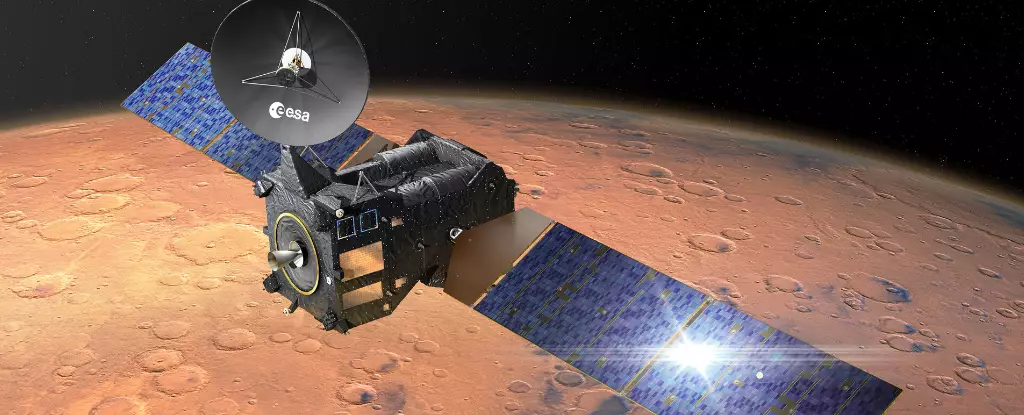In 2023, a remarkable initiative took place when the European Space Agency’s Exomars Trace Gas Orbiter (TGO) transmitted a simulated extraterrestrial message to Earth. This audacious endeavor, part of the art project “A Sign in Space,” beckoned not only scientists but also citizen enthusiasts from all walks of life to partake in an exciting journey of discovery. Grounded in creativity and collaboration, this project aimed to decode alien signals, engage the public in scientific exploration, and probe the fundamental question: Are we alone in the universe?
The Artistic and Scientific Fusion
The undertaking was conceived by Daniela de Paulis, a media artist and licensed radio operator with a deep passion for both art and science. By collaborating with prominent institutions like the SETI Institute and the Green Bank Observatory, she garnered a multidisciplinary approach linking art to the exploration of cosmic mysteries. Inspired by Italo Calvino’s “Cosmicomics,” the project emphasized the narrative aspects of science, urging participants to think beyond conventional parameters and engage with the cosmos imaginatively.
De Paulis and her team designed the message aiming to mirror the scientific principles explored in Calvino’s stories, illustrating that art can play a profound role in scientific discourse. The collaboration between scientists, artists, and citizen scientists represented a novel method for public engagement, conceptualizing a shared venture to unveil a potential message from beyond our planet.
As the message was received by three radio astronomy observatories, a worldwide initiative unfolded. Over the subsequent ten days, more than 5,000 citizen scientists came together online, pooling their talents to extract the raw data from the radio signal and decode it. This unprecedented act of collective intelligence reflects the shifting landscape of scientific inquiry, where public engagement and citizen collaboration hold immense potential.
Notably, the American scientist duo of Ken and Keli Chaffin achieved the remarkable feat of decoding the message after extensive simulations and countless hours of work. Their approach echoed a scientific method intertwined with creativity, for they discovered that the encoded message contained clusters of white dots that signified the structures of amino acids—essential building blocks of life. The fact that such scientific exploration can be approached by anyone willing to learn showcases a crucial democratization of science.
When the Chaffins presented their findings, they unearthed not only a complex image but also a narrative that transcended the confines of science and ventured into philosophical territory. The representation of amino acids, with their intricate bonding structures, evokes profound questions about the nature of life and the potential for extraterrestrial existence. Their interpretation sheds light on the fundamental building blocks crucial for biological formation, encapsulating the essence of life’s chemistry.
In their submission, the Chaffins also shared the intricate methodologies they employed in using a Margolus reversible cellular automata model to decode the message. Their work illustrated that engaging with science can be both intellectually stimulating and aesthetically appealing, as they transformed binary data into a visual representation vibrating with life.
With the decoding process now complete, attention shifts toward interpreting what this enigmatic message signifies for humanity. Daniela de Paulis and her colleagues are leveraging this pivotal moment to reflect on the collaborative nature of scientific exploration, emphasizing how citizen input and diverse perspectives can redefine our understanding of the universe. They are encouraging further inquiry through platforms like Discord, where community members can share insights and analyses, thus nurturing a dynamic environment for discovery.
The diversity of interpretations regarding the message—ranging from an invitation for communication to concerns about a potential threat—illuminates the vast expanse of human imagination and creativity. This spectrum of perspectives invites further exploration into how humanity might react to extraterrestrial signals and encourages a collective contemplate regarding the implications of such contact.
The ESA’s Exomars Trace Gas Orbiter project represents a groundbreaking intersection of art, science, and public engagement. By actively involving citizen scientists in the decoding process, the initiative democratizes research and expands our understanding of cosmic communication. Yet, with exciting discoveries come profound questions: What does it mean to engage with potential alien life? Are we prepared for the first contact?
As humanity continues to explore our cosmic neighborhood, this unique collaboration reminds us that the search for answers often transcends the rigid boundaries of scientific inquiry, blending creativity with learning and inviting us to become active participants in the universe’s grand narrative. Thus, the journey does not culminate here—rather, it opens a dialogue through which we can ponder our place in the cosmos and what it may mean for the future of life on Earth.


Leave a Reply